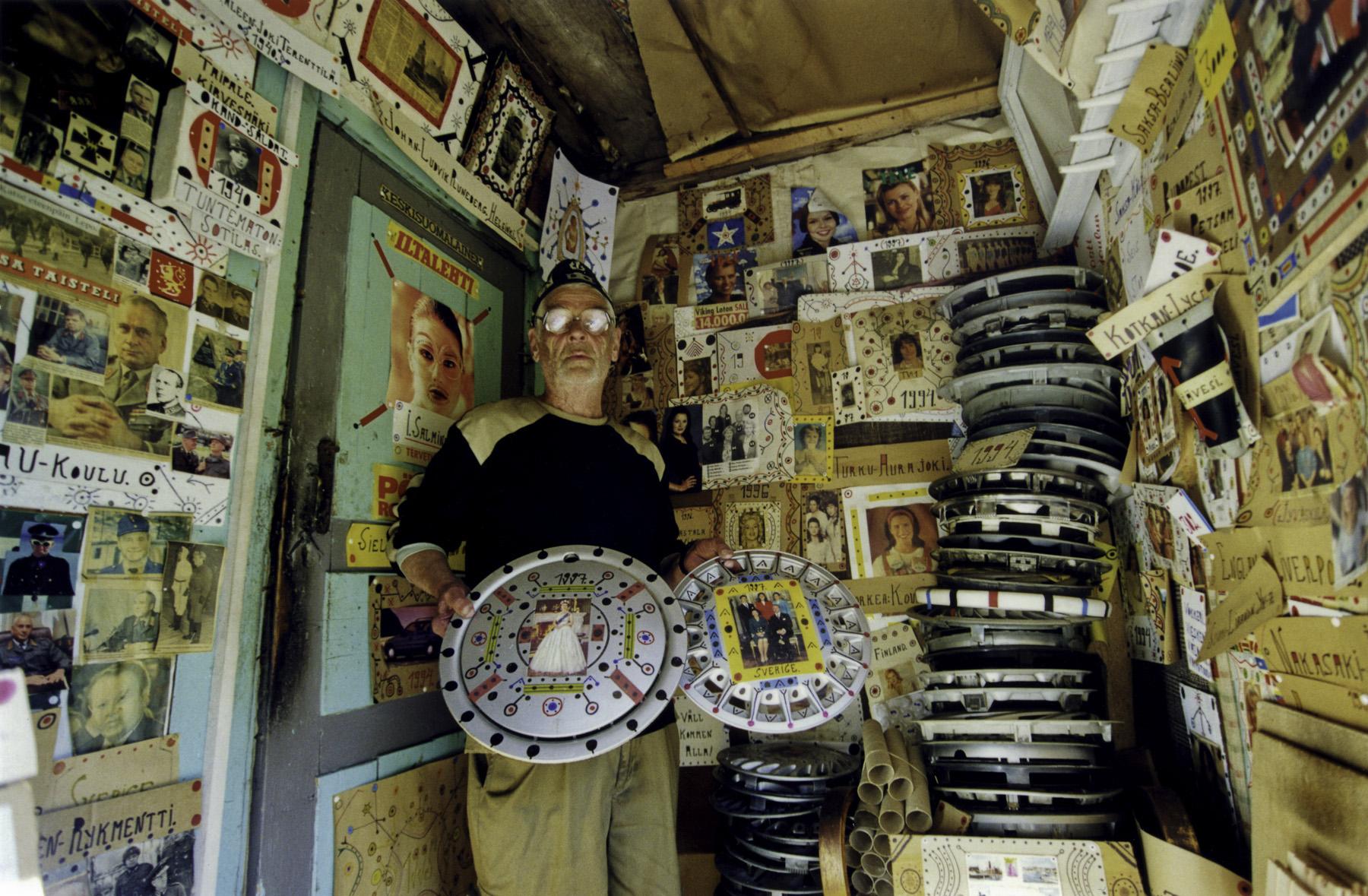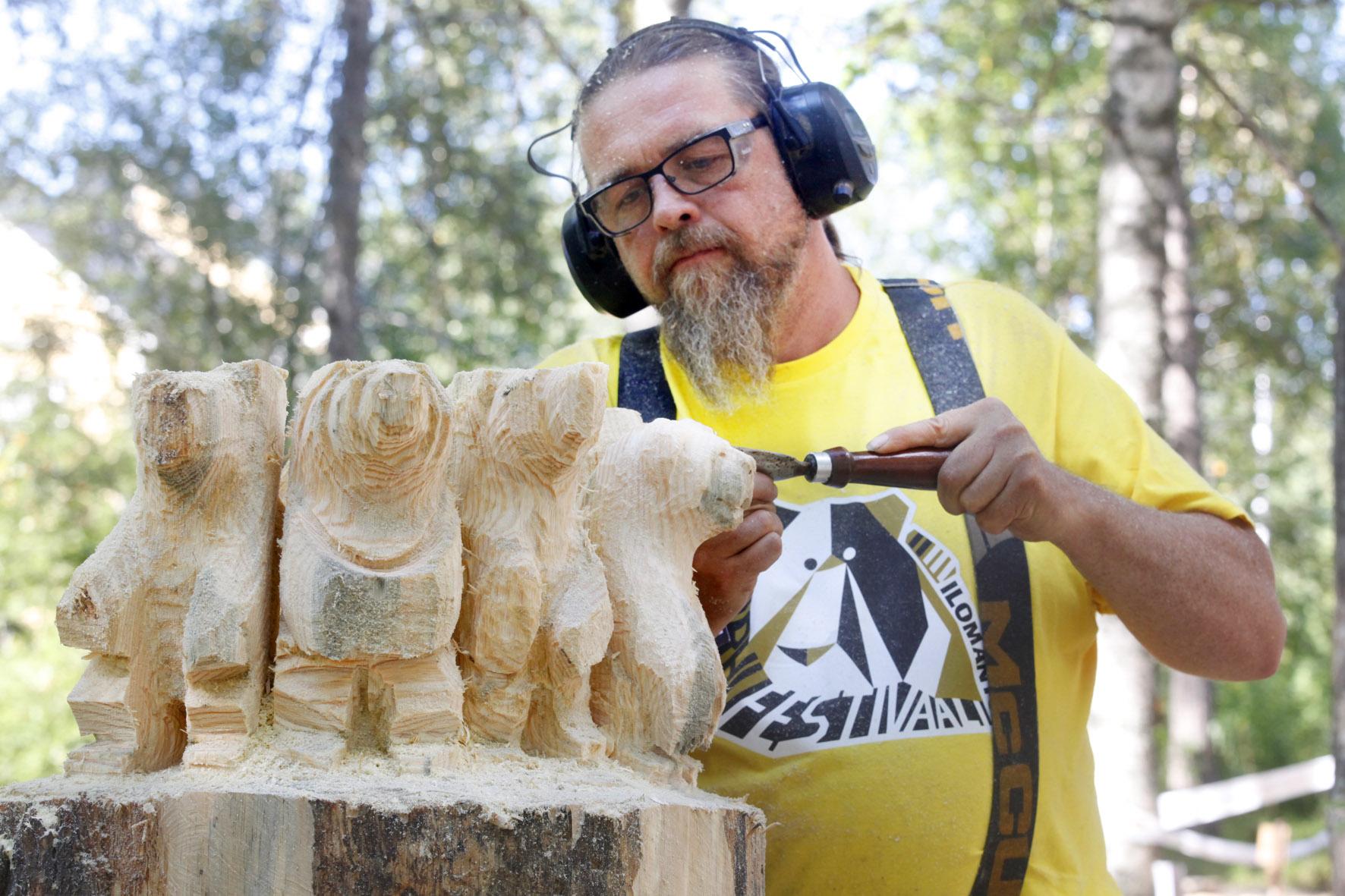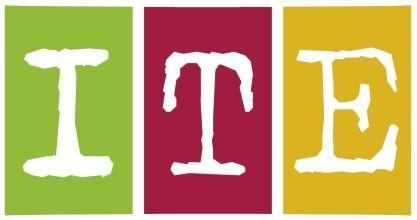Techniques
ITE artists often learn their basic technique at work or through the traditional method of observation, but then later develop and apply the technique to better meet their needs of artistic expression. Creativity, open-mindedness, innovativeness and manual skills are at the core of the self-taught nature of ITE art.
Instead of orthodoxy and a repetition of traditions, contemporary folk art blooms with bricolage aesthetics. This means finding new uses for techniques and materials that may not have originally been intended for artistic uses. ITE artists very seldom visit arts supply shops. The materials required can usually be found in the artist’s surroundings; they can be waste or natural materials or other materials which are easy to access such as wood, hardware or recycled materials.
Some common ITE techniques:
Drawing, painting and paper collages
ITE works executed by drawing and painting are characterised by the depiction of the artist’s inner world and other subjects not commonly found in amateur art, combined with an individual style. They emphasise naive expression, expressiveness, personal opinions and visionary qualities. Repetitive designs and surfaces filled with ornaments are also typical of two-dimensional ITE techniques.

Craft techniques
Nykykansantaidetta oman aikamme ei-ammattimaisesta käsityöstä tulee silloin, kun Contemporary non-professional craft-making turns into contemporary folk art when individual self-expression becomes more important in the execution than skill or orthodoxy. In ITE art based on craft expression the products are art-like works, which can sometimes be emphasised by their unusual scale. Bark works and embroidery are examples of the craft techniques used in ITE art.
Woodcraft
Woodcraft requires practical skills and somehow seems to reflect the Finnish national character and sense of beauty. ITE woodcraft combines craft traditions with sculpture. It relies on manual skills – on a good command of material and technique – but it is art-like and expressive in its nature. Small wooden men have been carved in sheds and workshops since time immemorial. What is important when carving these wooden men is the vividness and characterisation of each individual figure. The relief technique allows for the depiction of environments and groups. Small wooden sculptures are usually made with traditional tools; by carving with a chisel and cutting with a knife. The chain-saw has, however, replaced the centuries-long tradition of using the axe for carving larger pieces of wood.
Chain-saw carving is the most commercial form of ITE art as many sculptors produce saw works for sale. Chain-saw sculptors are guided not only by their imagination but also by the material, tradition and often by the preferences of the buying audience. Almost all Finnish chain-saw sculptors carve bears since – in the opinion of both makers and buyers – they are suitable subjects for wood block sculptures.

Concrete techniques
In many sculpture parks in Finland the ideas of ITE artists have been immortalised in concrete. The popularity of concrete as an ITE art material is based on its weatherproofness, durability and plasticity as well as its affordability. Concrete can easily be bought in a DIY shop and it does not require any special tools. Many ITE concrete sculptors first experiment with surplus mass left in a building site.
Concrete is a versatile material for sculpting and allows for small details as well as imposing forms. Where wood is an example of a material that controls sculptors’ decisions on forms and compositions with its particular forms and structure, the only limit with concrete is the artist’s imagination. At the finishing stage, concrete sculptures can be decorated by placing stones, pieces of glass or pearls onto the wet surface. Many concrete sculptors paint their work with outdoor paints or add colour to concrete mass before sculpting.

Metalwork
There are many ITE artists in Finland who learnt the techniques they use at work. It is typical of the ITE art techniques borrowed from professional techniques that a three-dimensional technique requiring a lot of skill is applied in artistic work. As professionals of the techniques, these ITE artists know their materials and methods extremely well and can, therefore, express an amazing command of material in their work. The most common skill learnt at work applied in ITE art is using welding techniques in metal sculptures.

Natural forms and materials
Nature is a boundless mine of materials and themes in ITE art. Branches, cones, stones, gnarl, polypores, moss and lichen are popular materials in ITE art. Some of the works made of natural materials have been entirely executed on nature’s terms. In these works of art, the form, raw material, subject, message and the forming process take the environment into account.
A natural form alone can be a work of ITE art. The personification of inanimate objects, such as stones or old tree trunks, can also be found in ITE art. Many ITE artists emphasise the figure of their chosen objects – they give them a name and reflect their own emotions on the natural forms. When ITE artists personify a natural form, they remove anything unnecessary and improve the likeness they see in the object.

Recycled art
Artists who use recycled and waste materials in their work are constantly on the lookout for anything suitable for artistic expression. Recycled art is characterised by collages, object compilations and assemblage techniques that combine different materials to construct three-dimensional works of art. In an assemblage process parts can be attached to each other by nailing, screwing, welding, binding, gluing or fusing.
Using recycled materials is a good starting point for limitless creativity as the materials are usually inexpensive or completely free; thus, working on these materials does not involve any significant financial risk and the accompanying necessity to create a perfect work. Recycled art means collecting and rearranging – creating something new from old materials. One form of recycled art is an expression whereby the artist uses a particular material that is relevant to them because it evokes memories of something dear and important.

Text: Minna Haveri, Doctor of Arts

